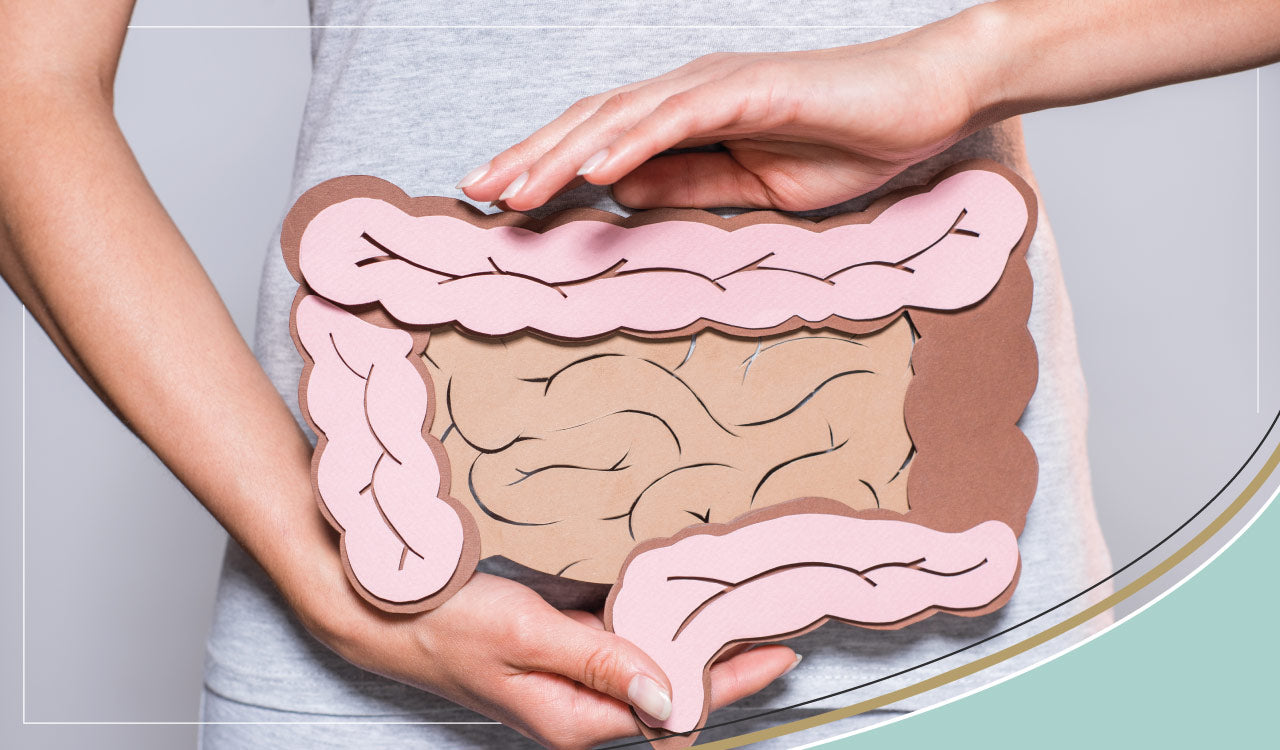Health & Wellbeing
The truth behind leaky gut or intestinal permeability
By Serena Coan
Feb 23, 2022

Leaky gut is a colloquial term for increased intestinal permeability or intestinal hyperpermeability, a symptom of inflammation or imbalances in the gut. While intestinal hyperpermeability may cause symptoms it does not tend to be the root cause of ailments and is associated with a long list of health conditions. There are many misconceptions about intestinal hyperpermeability, however an extensive collection of research has deepened our understanding of how this works.
Healthy digestion
Let us begin with how our digestive system functions when we are in optimal health. Our digestive system plays a key role in protecting the body from harmful substances once they have been ingested. Each stage of digestion has a way of reducing the unwanted particles from being absorbed later on.
Firstly, we have an oral microbiome, just as we have a gut microbiome, and the natural balance of this reduces risk of infections. Saliva also plays a key role in maintaining this balance. Once swallowed food and saliva are then passed through the oesophagus and down to the stomach where food is mixed with digestive enzymes and stomach acid. The role of this stage is to further break down components for absorption later on, and to kill off bacteria before it reaches the gut. The resulting product is a pulpy fluid-like substance called chyme, which moves through to the small intestine to be further digested and absorbed.
The intestines are lined with tightly packed mucosal cells that only permit desirable particles, such as water and properly digested fats, proteins, and starches, to pass through this barrier and access the bloodstream. The unwanted particles that have survived transit through the stomach include pathogens and undigested food particles and continue through the digestive tract before being excreted. This mechanism of the intestinal mucosal lining is called the barrier function and the connections between mucosal cells are referred to as tight junctions.
What happens in leaky gut and what are the long-term effects of leaky gut
Intestinal hyperpermeability is the term used to describe the phenomenon when these intestinal tight junctions become loose, allowing for unwanted foreign particles to pass through the gut lining into the bloodstream. When these particles (pathogenic bacteria, fungi, undigested food particles, toxins) pass through the lining, they can trigger a reaction from our immune system. The response may lead to bloating, apparent food sensitivities, fatigue, digestive problems and skin issues, not to mention further effects of inflammation such as migraines and mood disorders. In addition, damage and inflammation on this lining can prevent nutrients from passing through, potentially causing malabsorption which itself can lead to bloating, changes to bowel movements, fluid retention and dry skin and hair.
What causes leaky gut
The tight junctions loosen when the area is inflamed or irritated and is associated with medical conditions including celiac disease, lactose intolerance, allergies and Crohn’s disease. The intestinal lining can also be compromised as a result of lifestyle, medication, diet and genetics:
- Inflammatory diet - high sugar, processed foods, alcohol
- Triggering foods - this will be unique to each individual
- Medications - NSAIDs (e.g., paracetamol), antibiotics
- Cancer treatment - chemotherapy, radiotherapy
- Chronic stress - psychological or physical, for example oxidative stress
- Genetic predisposition
- Infections - viral, bacterial, fungal, parasitic
- High toxic load - toxins, pesticides, chemical exposure
- High lectin intake - found in legumes, they are removed by soaking prior to cooking
- Dysbiosis - an imbalance of gut bacteria.
What supports removal of leaky gut
Functional medicine follows the 5R approach to Remove, Replace, Repopulate, Repair and Rebalance in order to aid individuals with a compromised intestinal lining.
Remove
This stage is where one removes any triggers, whether that is sugar, processed foods, gluten, nuts or treating stress or infection. The triggers will not be the same for each individual and can include healthy foods that are causing irritation or immune dysregulation. For many removing the triggering foods is a short-term action to improve the rate of recovery, once the intestinal lining has recovered these foods may be able to be reintroduced.
Replace
Next the focus moves on to replacing processed foods that have been removed, primarily with whole foods, whole grains and an abundance of plant foods. There may also be a requirement for additional support with digestive enzymes, hydrochloric acid (stomach acid) or bile salts, depending on how compromised the digestive system is at the stage of intervention.
Repopulate
The third step is to repopulate the healthy gut bacteria by consuming probiotics and prebiotics. There are trillions of bacteria making up the gut microbiome to support normal digestive health, brain health and immune function, however they can be negatively impacted by our environment, diet and lifestyle. Probiotics are live bacteria that can be consumed in order to reintroduce beneficial bacteria into the gut and encourage colonisation, these are in the form of multi-strain supplements or fermented food and drinks. Each species and strain of bacteria acts differently, for instance a particularly well-researched strain for gut health is lactobacillus plantarum as it provides a soothing effect on the small intestine. Prebiotics help to provide a hospitable environment and are essentially the food for these live bacteria to not only survive but to thrive in our body. Prebiotics are also available in supplement form but are easy to add into the diet as they are found in plenty of foods including Jerusalem artichoke, bananas, onions and garlic.
Repair
In the fourth phase the focus is on repairing the damage to the gut during this time. The tight junctions and overall intestinal lining require specific nutrients to support repair and regeneration of the cells, including L-glutamine, zinc and antioxidants. L-glutamine is the most abundant amino acid in humans and one of the many important roles it plays is in regulating tight junctions, zinc may also modify tight junctions and a deficiency is strongly linked to hyperpermeability and antioxidants have benefits in restoring normal barrier function alongside managing oxidative stress caused by inflammation. These nutrients can be consumed through supplementation but also found easily in foods such as bone broth, oily fish and brightly coloured fruit and vegetables.
Rebalance
Gut health is heavily influenced by our psychological health, through the gut-brain axis, so assessing stress levels and effective management of stress is key in any endeavours to improve gut health. This can also be supported through improved sleep, hygiene, exercise, and a balanced mindset.
While this work can be done by an individual alone, finding guidance from qualified practitioners can prevent individuals from unnecessarily excluding food groups or supplementing with unsuitable products.
Sources & Further Reading
Intestinal permeability, leaky gut and intestinal disorders
Intestinal permeability – a new target for disease prevention and therapy
Leaky Gut As a Danger Signal for Autoimmune Diseases
The Roles of Glutamine in the Intestine and Its Implication in Intestinal Diseases
The role of natural salivary defences in maintaining a healthy oral microbiota.
Zinc and gastrointestinal disease
 Free Shipping on orders $70+ USD
Free Shipping on orders $70+ USD
 Courier & USPS Deliveries Available
Courier & USPS Deliveries Available
 Rated 4.9 out of 5 on Trustpilot
Rated 4.9 out of 5 on Trustpilot



















